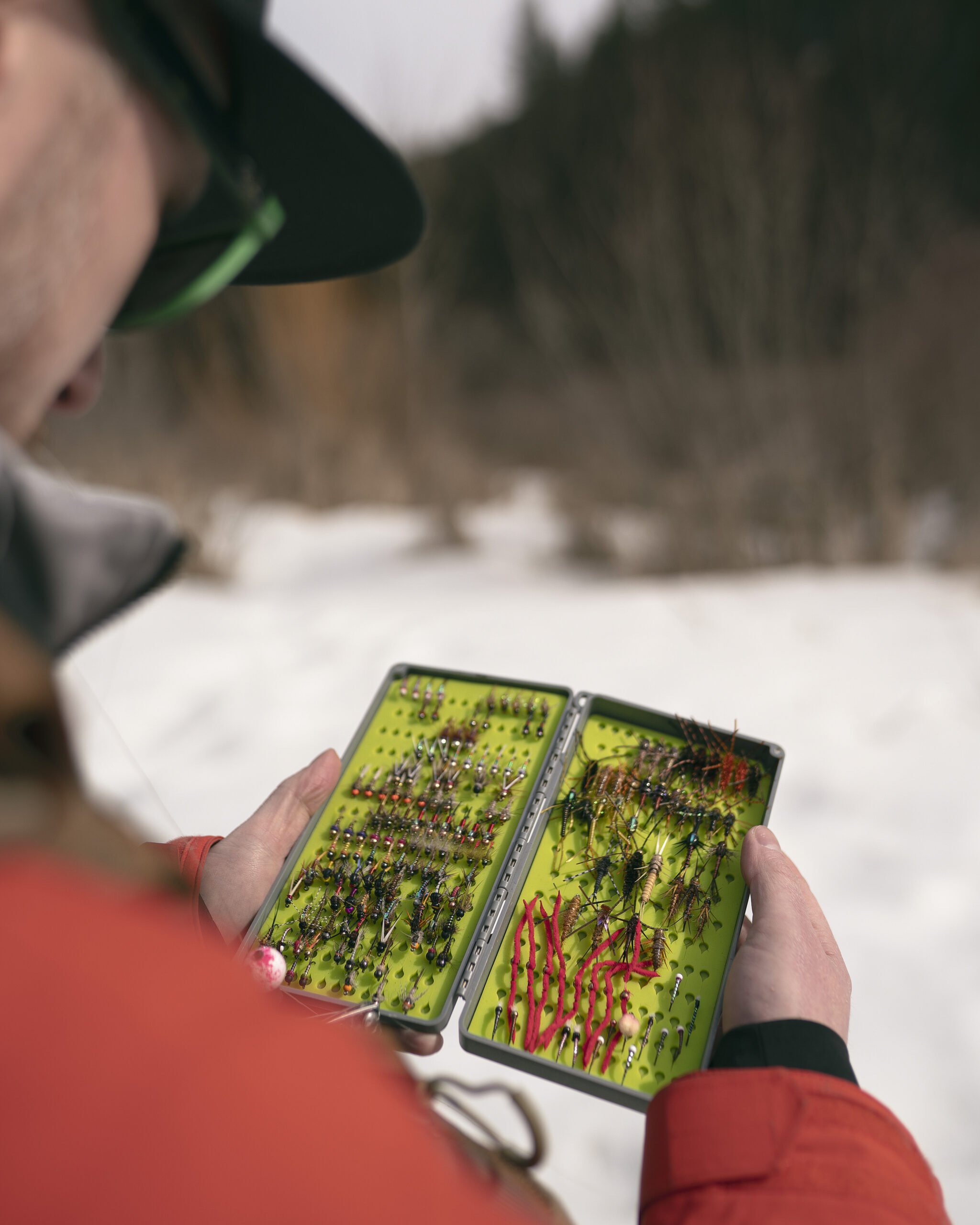
Identity crisis: What is this pattern supposed to be?
I don’t know if a fly can have an existential crisis, but if it could, it might begin with the question What am I supposed to be?
Occasionally, after getting a little too whimsical at the tying vise, I’ve asked this question on my creations’ behalf. Other times, if I tie up a hard-to-identify pattern, it’s because I wasn’t well-informed on what the fly was supposed to represent in the water in the first place.
The art of spinning thread onto a hook and incorporating various natural and synthetic materials can lead to endless possibilities, and considering that the artists’ inspiration is an almost-infinite number of things that crawl, swim and fly through the world, it’s amazing that the fly fishing community can come to any kind of consensus on what a pattern represents.
I’ve joked that my obsession with bugs has turned me into a hobby entomologist, but I know that’s not giving the scientists who’ve thus far discovered more than one million species of insects on earth their proper due. Truthfully, I learn where I can and take every opportunity to speak with people who know more about the subject than I do. In the field, I flip every rock I think might lead me to discovering something new to tie, or at least inform my next session at the vise.
Some of the most classic fly patterns we fish are far from being replicas of insects we find on our rivers and lakes. Someone new to fly fishing would be understandably confused if they were asked to identify the bug that a Hare’s Ear is supposed to represent—same thing with a Prince Nymph, for that matter. Neither of these quintessential patterns are named in a way that would clue one in to what insect they are supposed to imitate in nature, but we’ve all been told as greenhorns by the old timer in the fly shop that these are the patterns that catch fish. No argument here, and perhaps the majority of anglers are happy to simply make sure there’s enough of them in their fly box, but for me, the need to know why they’re classic patterns is almost as strong as the desire to fish them.
The Hare’s Ear Nymph is a generalist. It doesn’t imitate one thing in particular or have a single defining quality that indicates it’s mimicking a specific bug. Instead, the pattern was designed to vaguely represent a few different species of aquatic insects. Depending on the size of the tie, it might stand in for any one of them. Most commonly, the Hare’s Ear is associated with mayfly nymphs, caddis larva, scuds and sowbugs, and for that reason, more often than not it’s my go-to fly when starting my day and attempting to figure things out. I’m confident the Hare’s Ear covers a variety of bugs that may be living in a stream and I think it gives me the best chance for a bite before I start to really hone in on what the fish are taking. As a tier, I appreciate the fact that the Hare’s Ear’s generalist character offers somewhat of a blank slate with which to take some creative liberties.
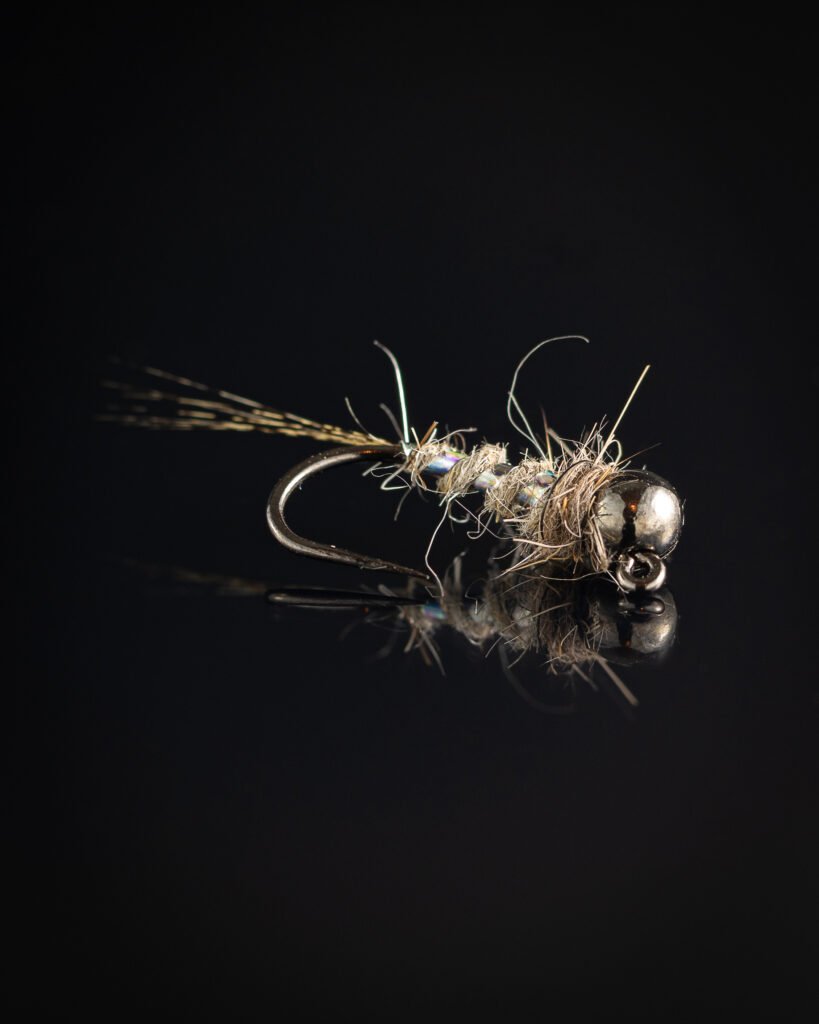
The Prince Nymph is another jack-of-all-bugs that sacrifices specificity for wide-ranging effectiveness. In my opinion, the humble Prince is in fact one of the original attractor patterns. Made up of a combination of materials that are known to be fishy (goose biots, peacock herl and rooster feather fibres), presenting a Prince Nymph to trout is like offering a free trip to a fishing journalist—the details are less important than the fact that it’s there for the taking. Tied on larger hooks, I can see the argument that the Prince Nymph is meant to imitate a stonefly, particularly as the split tail of the biots emulate the long slender cerci at the bottom of the abdomen, but don’t try to convince me that the smaller Prince Nymphs are meant to be a baetis imitation. If one wants to match a baetis hatch there are far more effective recipes (Greg Garcia’s Darth Baetis is a Force to be reckoned with, for example), but I suppose the fact that the Prince is even in the same conversation reflects how versatile it truly is.
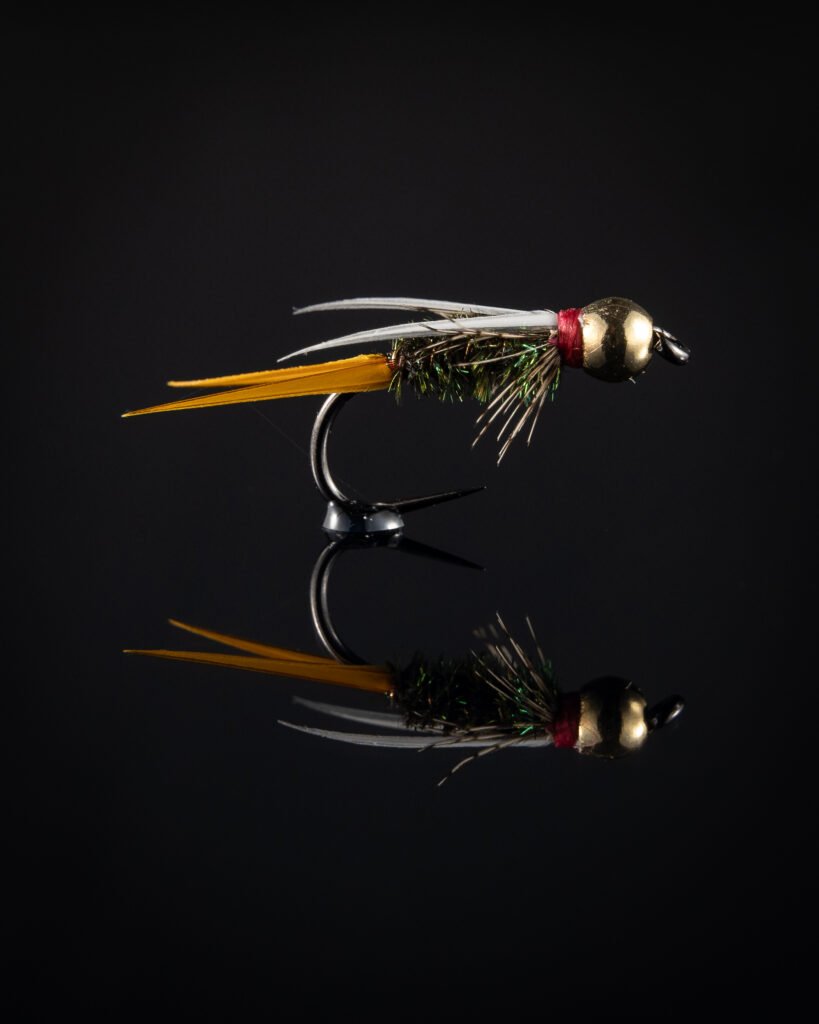
Stonefly patterns are unquestionably tied to replicate the specific insect they’re meant to represent, but the ambiguity begins when you start learning the names of these patterns. Pat’s Rubber Legs, for example, looks like a stonefly, swims like a stonefly but if you’d never heard of this ultra-classic pattern, you might not think it sounds like a stonefly. At this point, there are hundreds of stonefly patterns out there, as every tier, including myself, puts their own spin on its fundamental elements—long body, wiggly legs and a forked tail. That broad spectrum should give you confidence to not worry too much about creating the perfect imitation. That’s my approach, anyway; I tend not to get too hung up on the amount of legs my stoneflies have, for instance. I figure if the fish start counting legs, we’re all doomed.
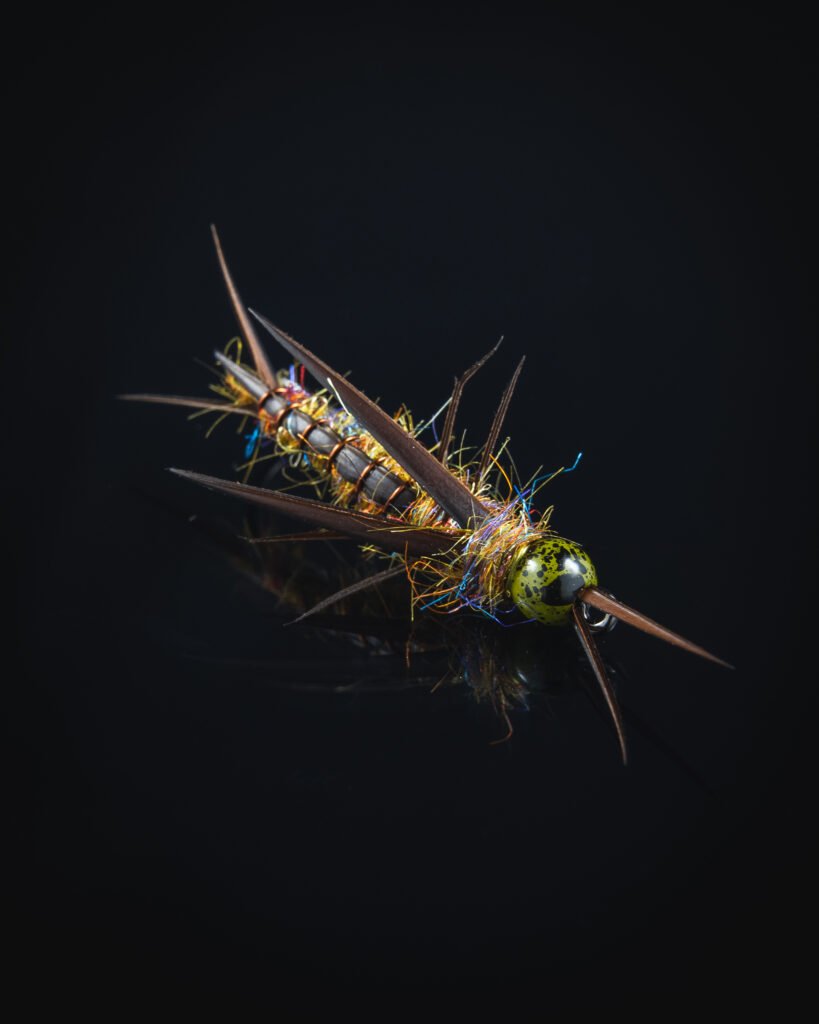
Mayfly patterns, similar to stonefly patterns, also benefit from being tied accurately…to a point. The patterns we present will certainly be in the neighbourhood of the bugs on the water, but rarely will they be a carbon copy of the local hatch. The result we are after as anglers is the one that shows us the fish couldn’t tell the difference and in my experience that means we’ve got the fundamental shape and size correct. Whether tied with a traditional wing or parachute, the most important identifying feature of a mayfly pattern is the fine tail fibres. Mayflies have a distinct tail which can be replicated with a variety of materials, but by far my favourite way to create the long, wispy tail is with moose mane. Easy to work with and typically available in varying shades of grey, brown and black, it only takes a few fibres to create a convincing tail of a mayfly.
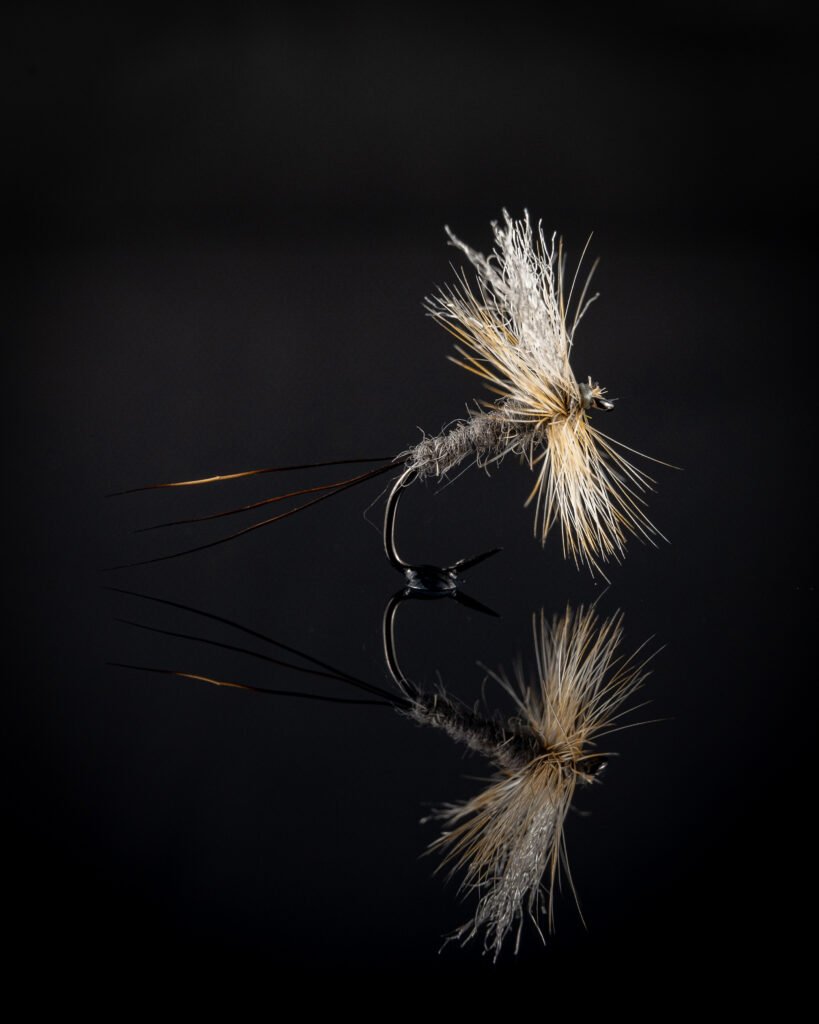
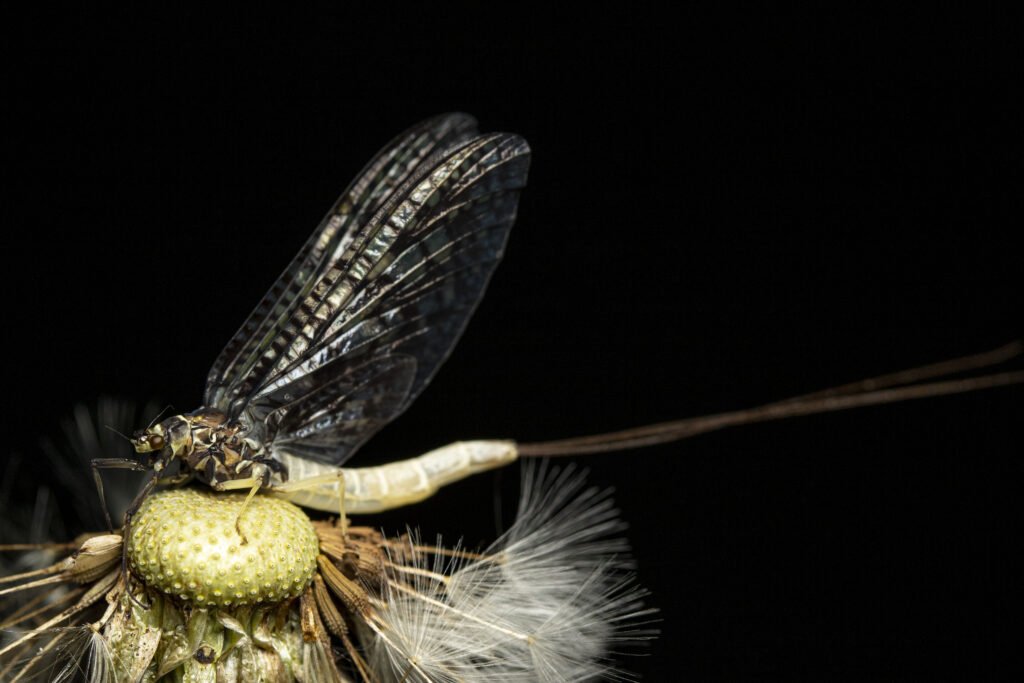
Step One
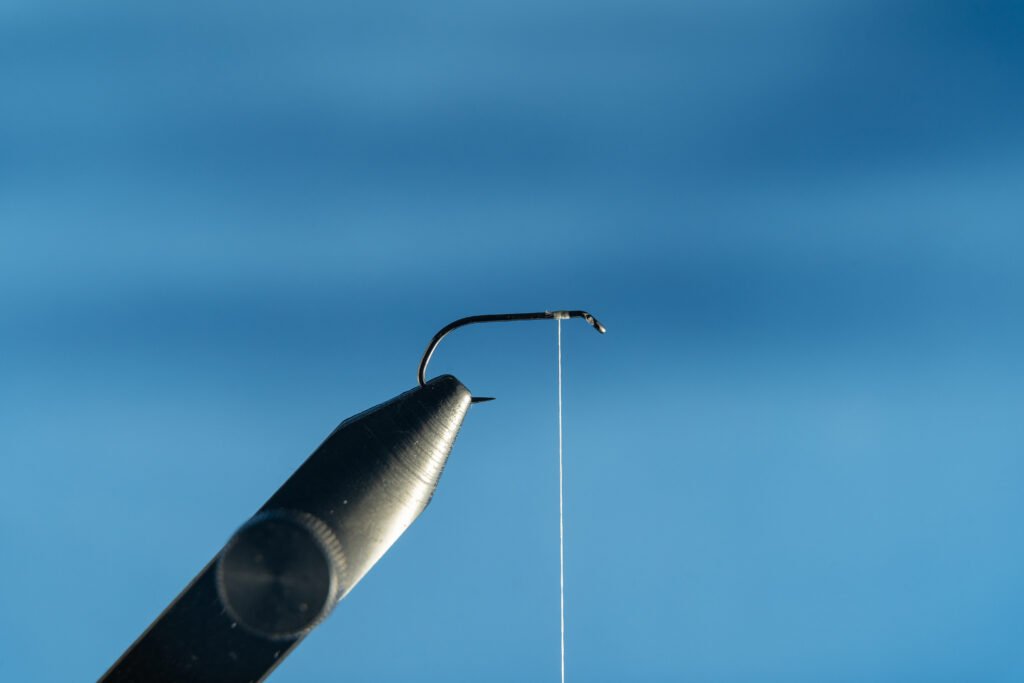
Place your hook securely into the vise, start your thread on the hook just behind the eye and make a few wraps backwards to get started. Cut the tag end off.
Step Two
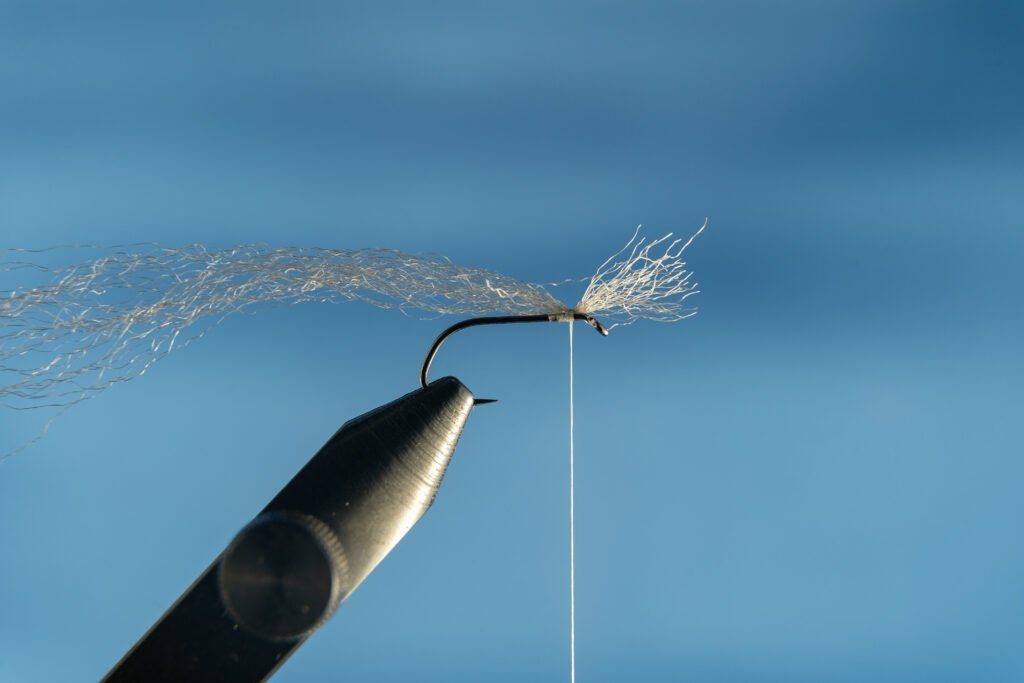
Tie in a small length of MFC’s Widow’s Web. The front should be long enough to form a wing.
Step Three
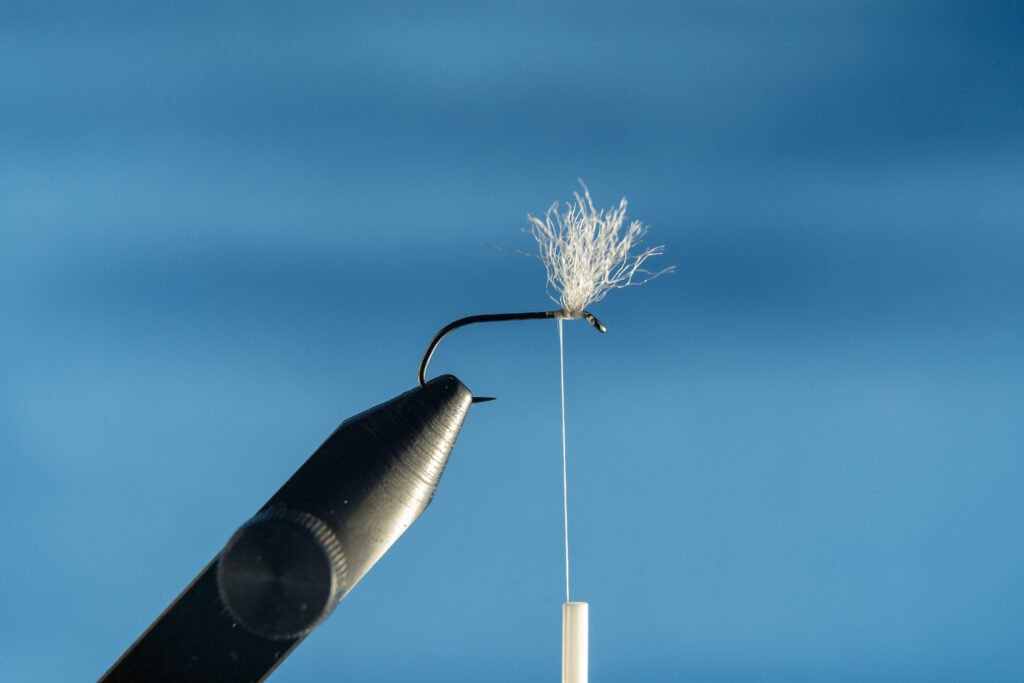
Pull the rear-facing Widow’s Web forwards and wrap the thread between the front-facing and rear-facing Widow’s Web to form wings. This can take a bit of practice.
Step Four
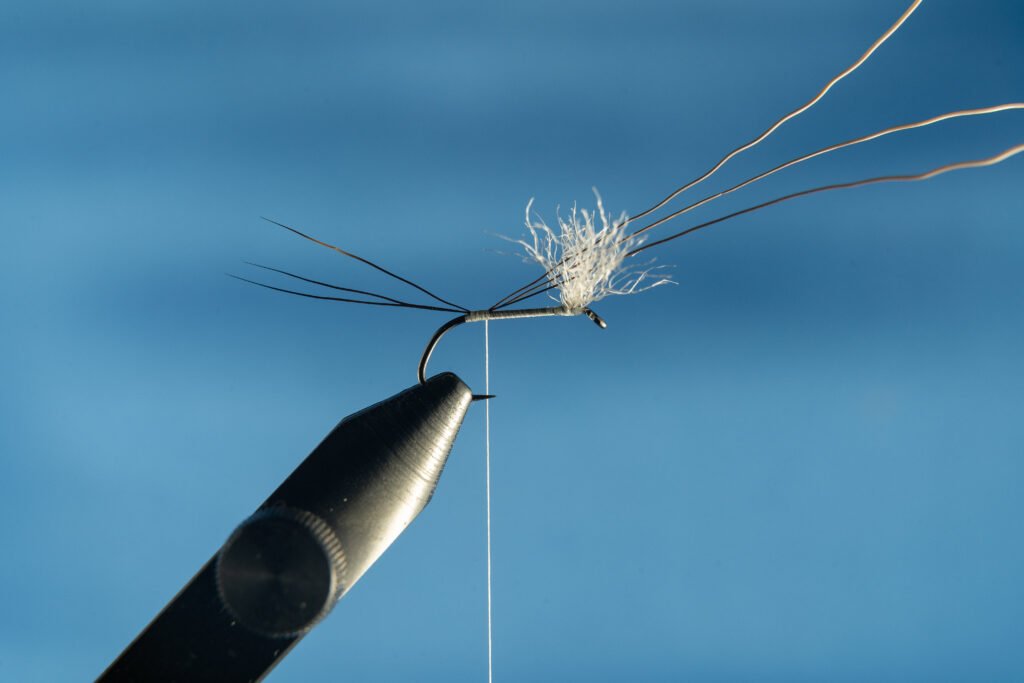
Wrap the thread towards the rear of the hook, creating a thread base, and end just before the bend of the hook. Cut free a few stands of moose mane and secure them near the bend of the hook. The tail should be approximately 1.5 times the length of the shank.
Step Five
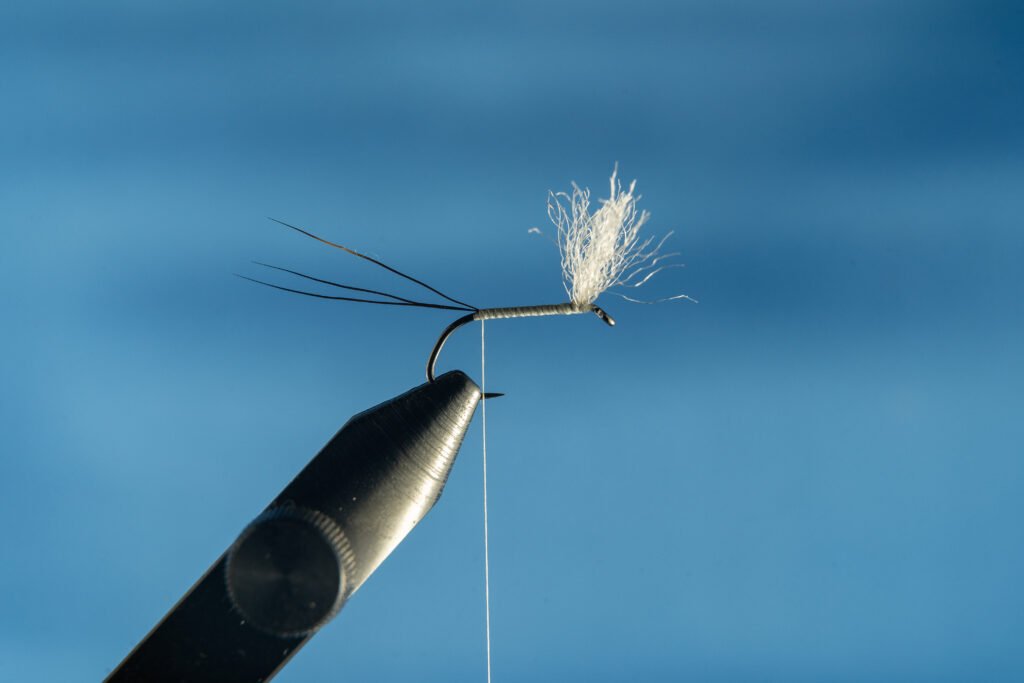
Secure the rest of the moose mane to the shank of the hook; make touching wraps to the base of the wings. Cut the excess moose mane away and wrap back to the bend of the hook.
Step Six
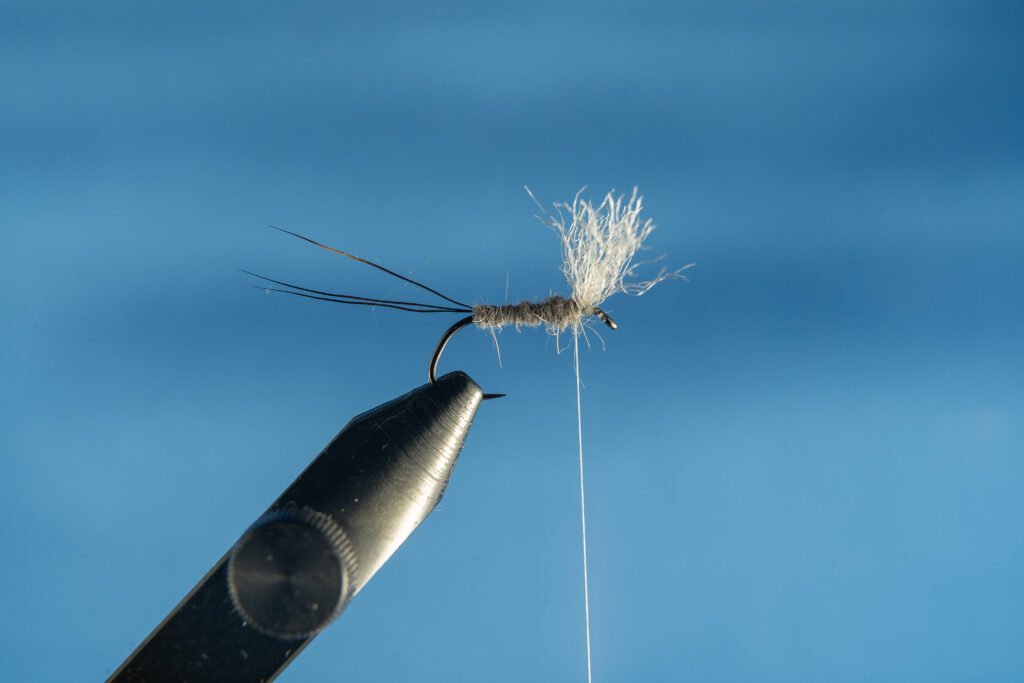
Create a dubbing noodle of Hareline Dubbin Adams Grey or the colour to match your local hatch and create a slender body towards the wings.
Step Seven
Prepare a hackle feather by stripping off some fibres, thus creating a clean stem for tie-in. Tie the feather in right behind the wing and then secure it in front as well.
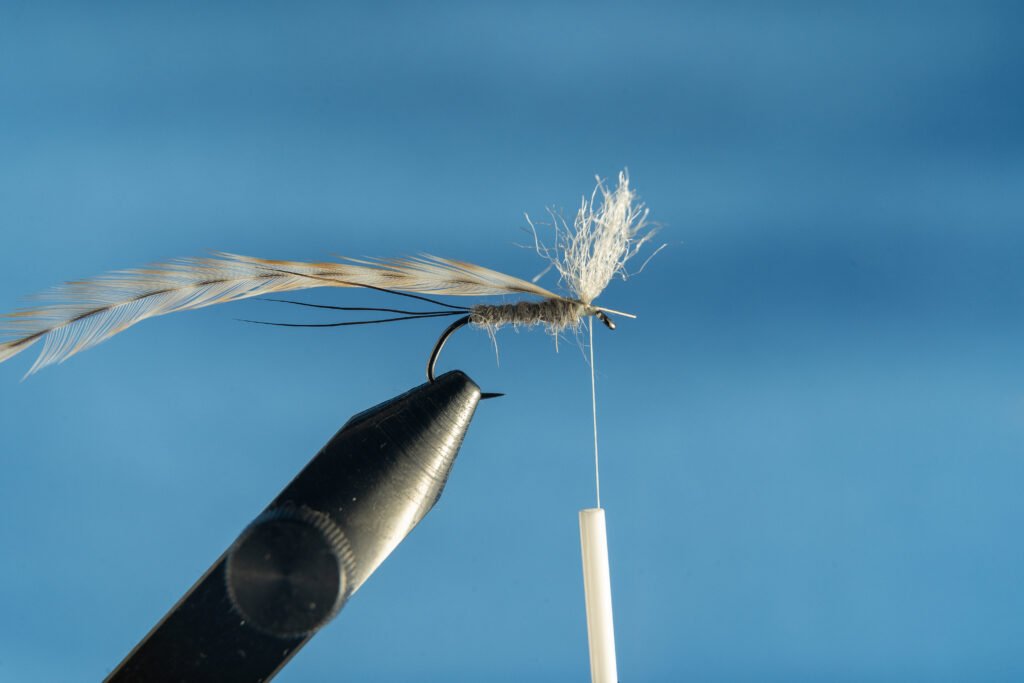
Step Eight
Cut off the excess stem from the hackle feather. Create another small dubbing noodle using the previously-selected dubbing. Cover the area in front of the wing and behind, but finish in front of the wing.
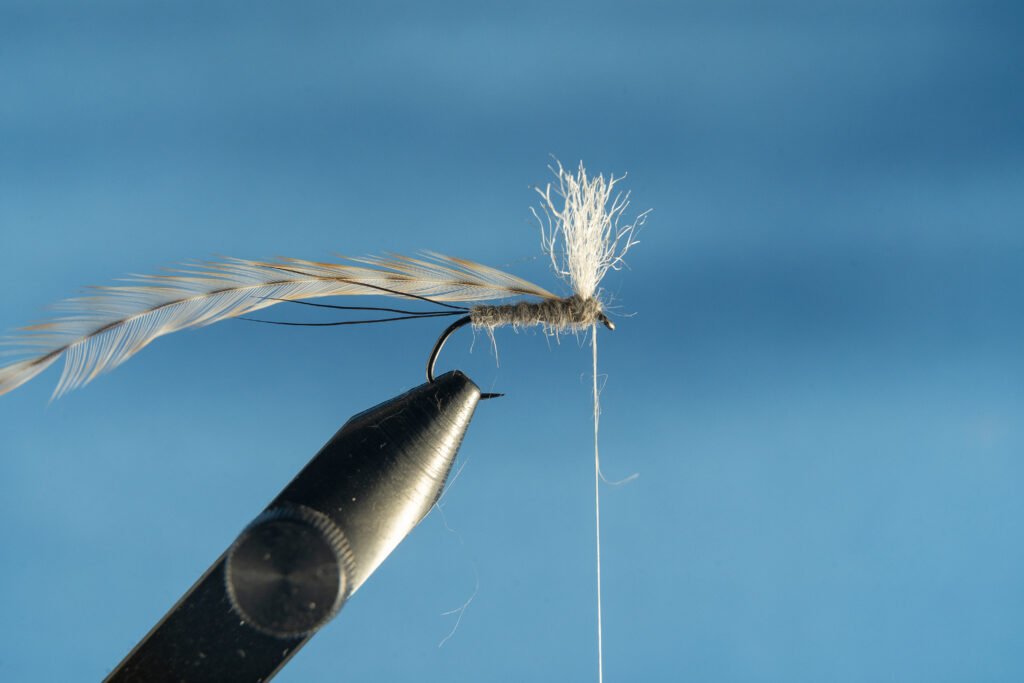
Step Nine
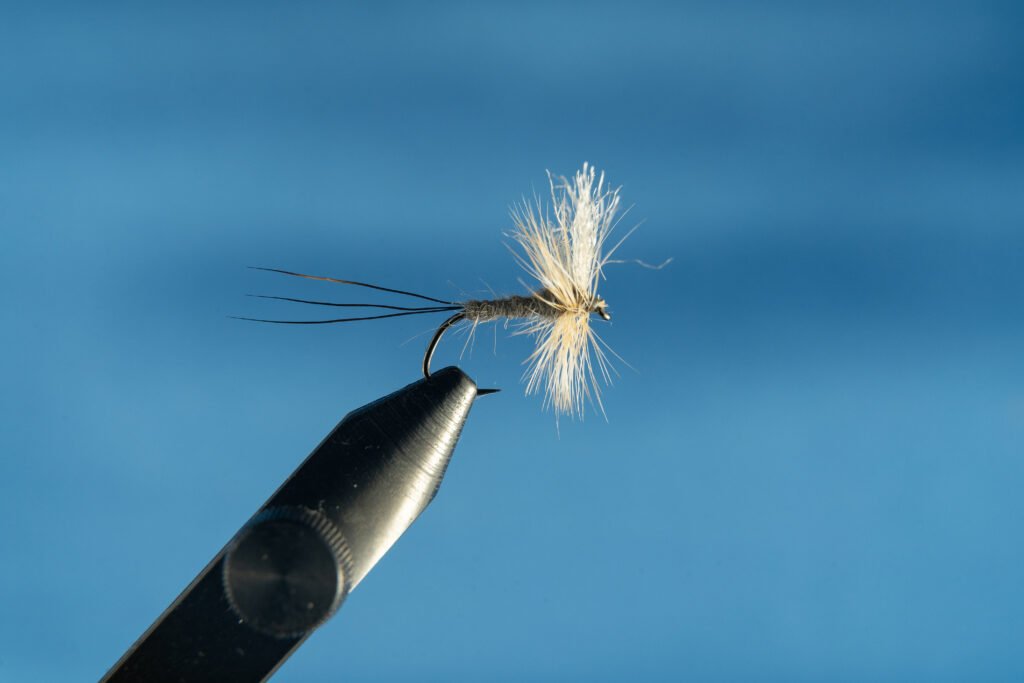
Wrap the hackle 2-3 times behind the wings and 1-2 times in front, depending on how much room you left for yourself and what your whip finish skills are like. Tie off the hackle in front of the wing and whip finish the fly!
There are flies we tie to accurately mirror the insects they represent, and there are also flies that act as generalists—attractor patterns that share overlapping characteristics of a host of aquatic species. Neither style is any better than the other and they all have a place in our fly boxes. I would encourage you to embrace the differences and not limit yourself by traditions or trends. If you’re not sure what a pattern is supposed to be, by all means do the research, but my advice on choosing which creation is worth keeping in your fly box or not is to let the fish decide.

